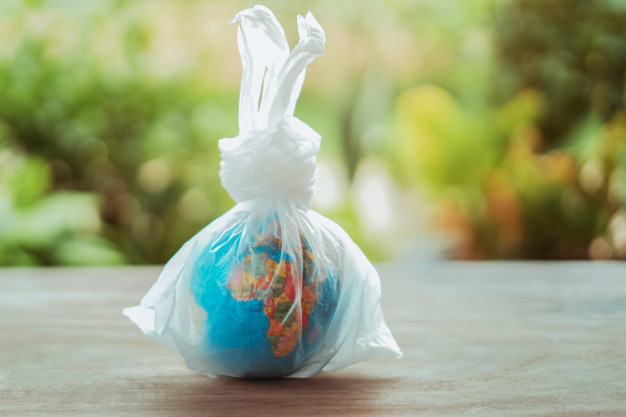In biological cycles, humans consume food to sustain life while their bodies simultaneously produce waste. Similarly, nature undergoes its own disposal process—during autumn, fallen leaves create a large amount of organic waste, while gases like carbon dioxide (CO₂) and methane (CH₄) are also released into the environment.
In the industrial sector, no manufacturing process is entirely waste-free; the only differences lie in the quantity of waste generated and the complexity of its treatment. Scientific advancements—especially in manufacturing and packaging—have significantly altered consumption habits. In the past, materials such as leaves, paper, glass, and metal were commonly used for packaging. However, plastic has now become the preferred alternative due to its superior flexibility and convenience.
However, this convenience comes with the growing issue of environmental pollution, as the rapid increase in waste from production and consumption has become a serious concern. Without effective management and disposal measures, waste—particularly plastic—can have devastating effects on the environment and human health. Establishing a well-structured waste management system is essential to ensuring sustainable development.
One of the "opportunistic" approaches to environmental protection is the emphasis on products labeled as “biodegradable” or “compostable.” This allows manufacturers to shift the responsibility for waste management onto the environment, while competing products are criticized as “non-biodegradable” or “harmful.” This perspective is one-sided, as it focuses solely on degradation without considering the product’s overall environmental impact. If biodegradability were the only criterion for acceptability, then so-called “biodegradable” products would be praised as the ultimate solution.

But reality is far more complex. While newspapers are biodegradable, under certain conditions, a buried newspaper can retain its printed text for decades. Supermarket plastic bags advertised as “degradable” might encourage excessive consumption and careless littering, rather than promoting effective waste collection and treatment. A notable example is the practice of dumping rice husks into rivers in the Mekong Delta, which has led to severe environmental consequences.
Thus, serious discussions on environmental issues require scientists to adopt the concept of a product’s “ecological life cycle.” This means evaluating a product’s total environmental impact—from raw material extraction and production to usage and disposal. While the media often highlights the negative effects of polyethylene (PE) bags and plastic medical waste (such as masks, bandages, and IV tubing), it rarely acknowledges their benefits. For instance, plastic packaging ensures the safe export of seafood, something banana leaves or paper cannot achieve. Plastics also help reduce product costs—for example, yogurt in plastic packaging is significantly cheaper than in glass containers.
Furthermore, plastic is not merely waste—many types can be recycled into FDA-approved plastic bottles or films, or even into polyester fibers for the textile industry. When handled properly, plastics can also contribute to energy production; when burned with other waste, they generate more heat than coal or oil, helping to conserve energy. This is why countries with advanced waste management systems—such as Singapore, Germany, Sweden, Denmark, Switzerland, Norway, and Finland—have not banned plastic bags.
A used supermarket plastic bag can be reused multiple times before serving as a trash bag—making it both convenient and hygienic. Even in countries that ban free plastic bags in supermarkets, no government prohibits the sale of PE trash bags for household waste disposal. The real issue does not lie in the material itself but in how people manage and handle it.
Many people deliberately overlook the properties of plastics, especially polyethylene (PE), despite its ability to be effectively processed and recycled. Plastic can undergo material recycling (to be reused) or energy recycling (by incineration with organic waste to generate energy for power plants, steel production, or cement manufacturing). In Germany, most post-consumer plastic waste is collected and incinerated as a substitute for oil or coal, optimizing resource use. In Vietnam and worldwide, plastic scrap is commonly recycled, with some even processed using advanced technology to produce high-quality products without environmental pollution. This issue is not exclusive to plastic waste but applies to all types of waste, making the development of an efficient waste classification and treatment system a governmental responsibility requiring strict organization and management.
Another perspective on the movement to "say no" to PE plastic bags is the shift to woven fabric bags made from polypropylene (PP)—a type of polyolefin plastic similar to PE but significantly heavier. The key question is whether consumers actually reuse these bags enough times to offset the resources consumed in their production. Meanwhile, supermarkets, which previously provided PE bags as a free customer service, now sell fabric bags under the guise of environmental protection. This not only cuts costs but also generates profit, and consumers, despite being "charged," find it hard to object since the cause of "environmental protection" has been used as a justification. From this perspective, the use of oxo-degradable PE bags by some supermarkets may actually be more sincere—though possibly influenced by misinformation from manufacturers.

Currently, there are two types of so-called “degradable” plastic bags, but they function very differently:
In Vietnam, this mechanically disintegrating plastic is widely used and even exempt from environmental taxes, while in Europe, such plastics have been banned due to their microplastic pollution risks. This policy unintentionally encourages littering by creating a false sense of security that waste will "disappear," rather than promoting proper waste collection and disposal. When buried, these plastics fail to decompose due to the lack of oxygen and appropriate temperatures.
Notably, no Vietnamese companies produce truly biodegradable packaging for the domestic market; instead, these products are mainly exported to Europe, North America, Australia, and New Zealand. In 2019, the total global production of bioplastics was only 300,000 tons, whereas petroleum-based plastics exceeded 300 million tons—meaning bioplastics accounted for just 0.1% of total production. Moreover, their high costs and limited supply restrict their use primarily to the medical field rather than everyday applications.
Waste is a byproduct of progress, and no "self-degrading" material alone can solve the environmental crisis. A sustainable solution requires strict management policies, efficient waste collection and treatment systems, technological advancements, and personal responsibility in reducing, reusing, and recycling waste.